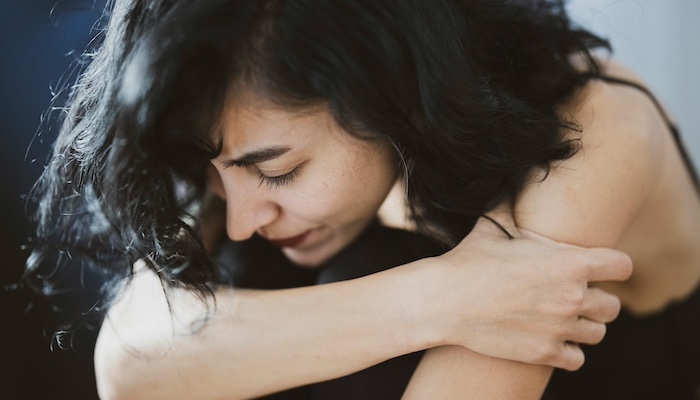
Upper back pain and chest pain occurring together can be especially concerning because vital organs, such as the heart, may potentially be involved. An understanding of the symptoms, underlying mechanisms, and causes of this type of pain can help differentiate between a commonly occurring condition and a medical emergency.
What Upper Back and Chest Pain Feel Like
Upper back and chest pain may begin gradually and worsen over a long period, or it can start suddenly without explanation or after an injury. This pain is typically felt more on one side of the spine, but it can be felt on both sides. People with upper back and chest pain usually have one or more of the following symptoms:
- Dull achiness that is felt in the upper back and chest, perhaps just on one side, and/or possibly extending into the shoulder area
- Burning, sharp, or electric-like pain that may worsen with movement, possibly radiating pain along a rib from the upper back to the chest area
- Stiffness in the shoulder, chest, and/or upper back due to pain or muscle tightness, which can reduce the ability to perform basic tasks, such as getting dressed or driving
- Pressure or fullness in the chest rather than pain
- Increased pain while breathing or trouble taking full breaths
- Trigger points in the upper back and/or chest that feel tender, sore, or tight, and can flare up and spread pain to nearby areas when touched
- Pins-and-needles tingling or numbness that might be felt along the rib or across a bigger area, possibly more in the chest or back
- Pain that spreads into the neck and/or arm, which can range from dull to sharp, and could be accompanied by tingling, numbness, and/or weakness
- Rib pain that travels along the rib or possibly between ribs
Sometimes upper back and chest pain alleviates with rest or avoiding specific activities, but not always. Some people may experience increased pain when sitting or lying down.
Development of Upper Back and Chest Pain
The chest and upper back are close to each other with both sharing many ribs that help protect the same vital internal organs. Some of the underlying biomechanics that can contribute to both upper back and chest pain include:
- Muscle dysfunction. Muscle inflammation or strain in the chest and/or upper back region can cause muscle tightness and/or spasms. When one muscle becomes painful or stiff, other nearby muscles may also become painful in response, such as if they need to work harder. Additionally, tendons, ligaments, or the muscle’s connective tissues (fascia) may become overstretched or inflamed and cause pain in the chest and upper back.
- Nerve compression or inflammation. When a spinal nerve in the thoracic spine (upper back) becomes compressed or inflamed, such as by a bone spur (abnormal bone growth) or thoracic herniated disc, pain may travel along the nerve from the upper back to the chest. Similarly, degeneration within the costovertebral joint (where the rib meets the thoracic spine) could pinch an intercostal nerve and cause pain along the rib.
- Problem with internal organs. Various problems or conditions can develop in the heart or lungs, which may send pain to both the chest and upper back.
Many other factors may be involved with developing chest and upper back pain. Sometimes upper back and chest pain may also have more than one cause or separate causes.
Getting a Diagnosis for Upper Back and Chest Pain
Any sudden onset of unexplained chest pain that lingers needs to be evaluated by a doctor. When evaluating upper back and chest pain, a doctor typically aims to rule out cardiac causes before checking other potential causes, such as an injury to the muscles, ribs, or spine.
A trained medical professional can accurately diagnose the cause of upper back and chest pain. Once an accurate diagnosis is found, an effective treatment plan can begin.
Precision Pain Care and Rehabilitation has two convenient locations in Richmond Hill – Queens, and New Hyde Park – Long Island. Call the Queens office at (718) 215-1888 or (516) 419-4480 for the Long Island office to arrange an appointment with our Interventional Pain Management Specialists, Dr. Jeffrey Chacko or Dr. Sonny Ahluwalia.













